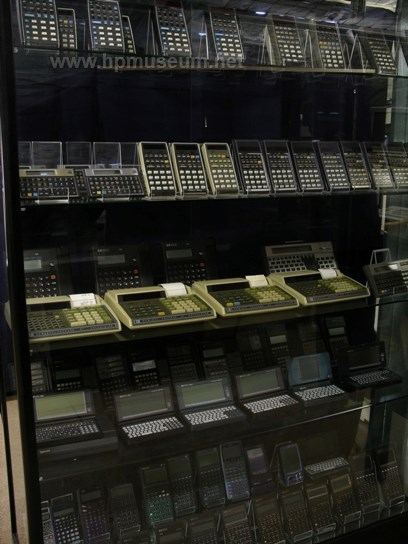Business Desktops/Calcs
 | Calculators Selection: |
| 1) HP-35 (1972) | |
| 2) HP-46 (1973) | |
| 3) HP-81 (1973) | |
| 4) HP-80 (1973) | |
| 5) HP-45 (1973) | |
| 6) HP-65 (1974) | |
| 7) HP-70 (1974) | |
| 8) HP-55 (1975) | |
| 9) HP-21 (1975) | |
| 10) HP-22 (1975) | |
| 11) HP-25 (1975) | |
| 12) HP-25C (1976) | |
| 13) HP-27 (1976) | |
| 14) HP-67 (1976) | |
| 15) HP-91 (1976) | |
| 16) HP-97 (1976) | |
| 17) HP-29C (1977) | |
| 18) HP-92 (1977) | |
| 19) HP-01 (1977) | |
| 20) HP-10 (1977) | |
| 21) HP-19C (1977) | |
| 22) HP-31E (1978) | |
| 23) HP-32E (1978) | |
| 24) HP-37E (1978) | |
| 25) HP-38E (1978) | |
| 26) HP-33E (1978) | |
| 27) HP-34C (1979) | |
| 28) HP-97S (1979) | |
| 29) HP-41C (1979) | |
| 30) HP-11C (1981) | |
| 31) HP-12C (1981) | |
| 32) HP-10C (1982) | |
| 33) HP-15C (1982) | |
| 34) HP-16C (1982) | |
| 35) HP-18C (1986) | |
| 36) HP-28C (1987) | |
| 37) HP-14B (1988) | |
| 38) HP-17B (1988) | |
| 39) HP-19B (1988) | |
| 40) HP-22S (1988) | |
| 41) HP-27S (1988) | |
| 42) HP-32S (1988) | |
| 43) HP-42S (1988) | |
| 44) HP-20S (1989) | |
| 45) HP-21S (1989) | |
| 46) HP-10B (1989) | |
| 47) HP-48SX (1990) | |
The web's best resource on this category is at the outstanding site: http://www.hpmuseum.org. The handheld calculator business was like no other in HP history. The HP-35 was the most exciting product ever introduced by the company. The HP-35 was HP's first ever retail product and a brand new category for both the company and for the industry. In its first year on the market, the HP-35 alone accounted for 41 percent of HP's entire profit. In 1973, the calculator business was almost as big as the rest of HP's data products businesses combined. But, the handheld calculator business flared out quickly. The business saw almost no growth in the latter half of the 1970s and by 1980, claculators accounted for less than seven percent of HP's data products business. By 1990, calculators were less than one percent of HP's total business. Collector's Notes: Calculators are great to collect because they are so small. But there are plenty of add-ons, accessories, software and third party products to make HP calculator collecting a full time obsession. We have found significant variability in the reliability of early HP handheld calculators. The very first models based on the HP-35 form factor are still extremely reliable. These models include the 35, 45, 55, 65, 67 and 80. As of 2015, more than 90 percent of these models that have come through the museum still work wonderfully. By contrast, the subsequent 20 Series calculators are far less robust. These models include the 21, 22, 25, 27 and 29. We have found that fewer than 50 percent of these units still function properly. The 30 Series models from the late 1970s fall somewhere in between with respect to ongoing reliability. | |
| Back | Product Documentation | Category Accessories |
^ TOP©2004 - 2024 BGImages Australia - All Rights Reserved.
The HP Computer Museum and BGImages Australia are not affiliated with HP Inc. or with Hewlett Packard Enterprise. Hewlett Packard and the HP logo are trademarks of HP Inc and Hewlett Packard Enterprise. This website is intended solely for research and education purposes.
